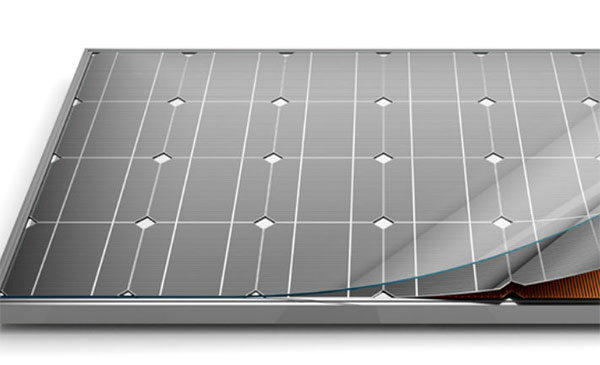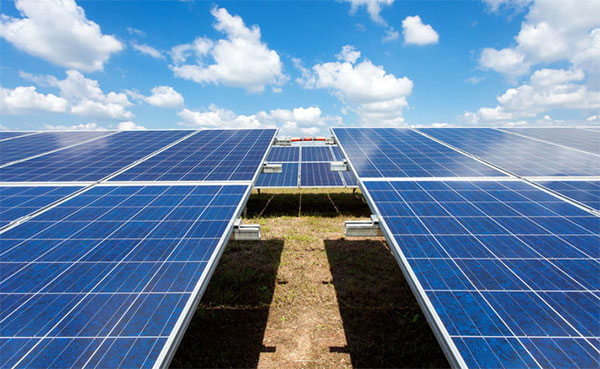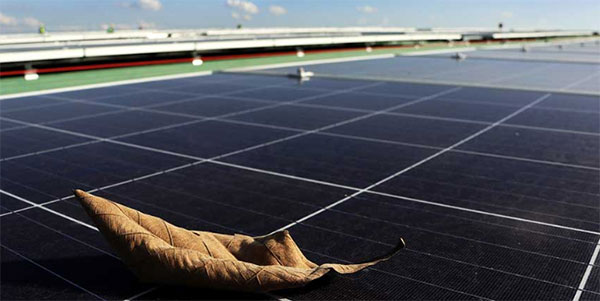Description
Solar panels can produce noticeable noise in the rain, typically a tapping sound, but this varies with panel type and installation.

Understanding Solar Panel Noise
Solar panels, a crucial component in renewable energy systems, have become increasingly prevalent. However, there's a lesser-known aspect to them – the noise they might generate, particularly during rain. Understanding this noise involves delving into its mechanism, the factors influencing it, and a comparison with traditional roofing materials.
Mechanism of Noise Generation in Solar Panels
The primary mechanism through which solar panels generate noise is through the impact of raindrops. Each raindrop that strikes the surface of a solar panel creates a tiny vibration, which collectively can produce a noticeable sound. The nature of this sound varies, depending largely on the type and intensity of the rain, as well as the construction and installation of the solar panels themselves. Unlike the more diffuse noise of rain on traditional materials, the noise on solar panels can sometimes be more percussive and sharp.
Factors Influencing Noise Levels
Several factors can influence the level of noise generated by solar panels during rain. The material of the solar panel plays a significant role; for example, panels with a glass surface might produce a sharper noise compared to those with a composite surface. The angle of installation also affects noise levels – panels installed at a steeper angle may lead to quicker runoff of rainwater, potentially reducing the impact noise. Moreover, the quality of installation and the presence of any underlayment materials can significantly alter the acoustic properties. High-quality installation and proper insulation can help in dampening the sound.
Comparing Rain Noise on Solar Panels vs. Traditional Roofs
When comparing the noise of rain on solar panels to that on traditional roofs, one must consider both the material and construction of the roofs. Traditional roofing materials like asphalt shingles or tiles have different acoustic properties compared to solar panels. Generally, solar panels might produce a more distinct, sharper noise during rain due to their hard and smooth surfaces. In contrast, traditional roofing materials, with their more textured surfaces, tend to create a softer, more muffled sound. The comparison also extends to the perception of the sound inside the building; the level of insulation and the type of roofing underlay can greatly influence how much of this noise is actually heard indoors.
Impact of Rain on Solar Panels
Rainfall, an environmental variable, impacts solar panels not only in terms of energy production but also by generating noise. This effect varies based on the characteristics of the rain, its intensity, and the duration and frequency of rainfall.
Noise Characteristics During Rainfall
Rainfall creates distinct acoustic patterns on solar panels. Light rain produces a soft, consistent noise, while heavy rain can cause a loud, percussive sound. The type of noise also depends on the drop size; larger raindrops result in louder and more sporadic noises. The sound level varies, but it can sometimes be noticeable enough to be heard inside a building, depending on the building's insulation and the solar panels' installation quality.
Effect of Rain Intensity on Noise Levels
The intensity of rain significantly influences the noise levels produced by solar panels. During light rain, noise levels are relatively low and often go unnoticed. However, as the intensity increases to a moderate or heavy downpour, the noise can become more prominent.
In heavy rain, the noise levels from solar panels can reach up to 60 decibels, which is comparable to a conversation in a restaurant or background music. This level can be disruptive, especially in residential areas where quietness is valued.
Duration and Frequency of Rain-Induced Noise
The duration and frequency of rainfall are critical factors in determining the overall impact of rain-induced noise on solar panels. In regions with frequent but short-lived rain showers, the noise impact is minimal and often goes unnoticed. However, in areas with prolonged rain periods, the continuous noise can become a noticeable concern for residents. The frequency of such events also plays a role; occasional rain may not be bothersome, but regular heavy rainfall can lead to continuous noise issues, necessitating the consideration of noise mitigation strategies during solar panel installation.
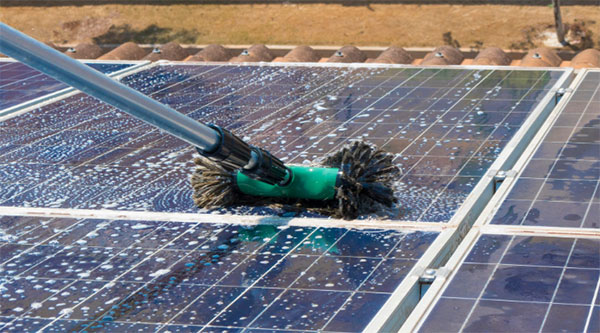
Noise Mitigation Techniques for Solar Panels
To address the noise issue associated with solar panels during rainfall, various mitigation techniques have been developed. These methods range from innovations in materials and design to specific installation strategies and aftermarket solutions.
Material and Design Innovations
Innovations in materials and design play a crucial role in reducing noise from solar panels:
- Use of Acoustic Dampening Materials: Incorporating materials that absorb sound can significantly reduce noise levels. For instance, a layer of foam or rubber between the panel and the mounting structure can dampen vibrations.
- Textured Panel Surfaces: Designing solar panels with textured surfaces can disrupt the pattern of raindrop impacts, thereby reducing the noise produced.
- Integrated Structural Designs: Panels designed with integrated channels or ridges can direct rainwater more efficiently, minimizing the impact noise.
These innovations aim to maintain or enhance the efficiency of solar panels while reducing the acoustic impact.
Installation Strategies to Reduce Noise
Proper installation techniques are vital in minimizing noise:
- Optimal Tilt and Orientation: Adjusting the tilt angle of solar panels can influence how rain interacts with the surface, potentially reducing noise.
- Sound-Insulating Mounting Systems: Using mounts with sound-insulating properties can absorb vibrations, lessening the noise transmitted to the structure below.
- Buffer Zones: Creating buffer zones around the panels, such as using vegetation or other materials, can also help in noise reduction.
Aftermarket Products and Solutions
Several aftermarket products are available to reduce noise:
- Acoustic Panels or Covers: These can be installed over or around the solar panels to absorb sound.
- Vibration Dampeners: These can be added to the existing installation to reduce the noise caused by vibrations.
- Rain Guards: Specially designed rain guards can be fitted to deflect raindrops, thereby reducing their impact noise.
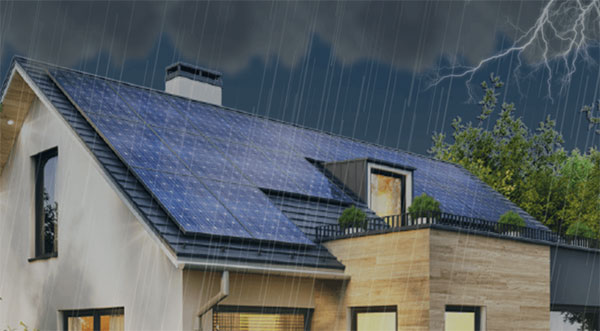
Assessing the Acoustic Impact of Solar Panels
The acoustic impact of solar panels is a growing concern, particularly in densely populated areas. Understanding and assessing this impact involves both technical measurements and an analysis of the noise levels, as well as considering the different experiences in residential versus commercial settings.
Measurement and Analysis of Noise Levels
The first step in assessing the acoustic impact is to measure and analyze the noise levels produced by solar panels. This involves using sound level meters to capture the decibel levels during various weather conditions. The data collected provides insights into the typical noise levels and the factors that influence them, such as rain intensity, panel type, and installation angle.
| Aspect |
Residential Settings |
Commercial Settings |
| Noise Level |
Typically lower due to smaller panel installations. |
Potentially higher due to larger arrays of panels. |
| Impact on Occupants |
More noticeable, as residential areas are generally quieter. |
Less noticeable due to ambient noise in commercial areas. |
| Mitigation Measures |
Focus on sound-dampening materials and strategic installation. |
May include structural modifications and strategic zoning. |
| Community Response |
Higher sensitivity and potential for complaints. |
Generally more tolerant due to the commercial nature of the area. |
Solar Panel Noise in Residential vs. Commercial Settings
Understanding the different experiences of solar panel noise in residential and commercial settings is crucial for developing appropriate mitigation strategies. Residential areas tend to be quieter, making any noise from solar panels more noticeable and potentially bothersome. In contrast, commercial settings often have higher ambient noise levels, which can mask the sound from solar panels.
Community Perceptions and Responses to Solar Panel Noise
Community perceptions and responses to solar panel noise vary significantly. In residential areas, there is often a greater concern for noise pollution, leading to more stringent requirements for solar panel installations.
Effective communication and education about the actual noise levels and mitigation strategies can help alleviate concerns. In commercial settings, the focus is more on the efficiency and cost-effectiveness of solar panels, with less emphasis on noise issues. However, as solar energy becomes more widespread, understanding and addressing these concerns is vital for both community acceptance and the sustainable growth of solar energy.
Comparing Solar Panel Types and Noise Emission
Different types of solar panels have varying characteristics, including their efficiency, cost, and even the amount of noise they generate during rain. Comparing monocrystalline and polycrystalline panels, as well as considering thin-film solar panels and emerging technologies, provides insight into their respective noise emissions.
Monocrystalline vs. Polycrystalline Panels
Monocrystalline and polycrystalline solar panels are the most common types used in solar installations. Their noise emission, efficiency, cost, and other characteristics differ due to their manufacturing processes and material properties.
| Feature |
Monocrystalline Panels |
Polycrystalline Panels |
| Material Quality |
Made from a single, high-purity silicon crystal. |
Composed of multiple silicon fragments melted together. |
| Efficiency |
Higher, about 15-20% efficiency. |
Slightly lower, typically 13-16% efficiency. |
| Cost |
More expensive due to manufacturing process. |
Cheaper than monocrystalline panels. |
| Noise Emission |
Potentially lower due to smoother surface. |
Slightly higher, the fragmented nature may cause more noise. |
| Lifespan |
Generally longer, often exceeding 25 years. |
Slightly shorter lifespan compared to monocrystalline. |
| Aesthetic Appeal |
Uniform black appearance. |
Less uniform, bluish hue with visible crystals. |
Thin-Film Solar Panels and Noise Characteristics
Thin-film solar panels, known for their lightweight and flexible design, also exhibit unique noise characteristics:
- Lower Noise Emission: Their thin, flexible design can result in lower noise emissions during rain.
- Variety of Materials: Made from materials like amorphous silicon, cadmium telluride, or CIGS (copper indium gallium selenide), each with different acoustic properties.
- Installation Flexibility: Can be installed on a variety of surfaces, potentially reducing the impact of rain noise.
Emerging Technologies and Noise Reduction Advancements
Emerging technologies in solar panel manufacturing are focusing on reducing noise while enhancing efficiency:
- Innovative Surface Textures: New textures are being developed to disrupt raindrop impact, reducing noise.
- Integrated Noise Dampening: Some panels are being designed with built-in noise-dampening materials.
- Advanced Materials: Research is ongoing into materials that can efficiently convert sunlight into electricity while minimizing noise emissions.
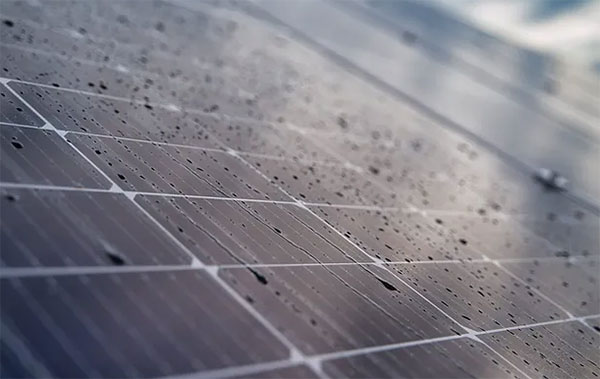
Maintenance and Rain-Related Noise Concerns
Proper maintenance of solar panels is essential not just for optimal performance but also to minimize noise issues, especially those related to rain. Understanding routine maintenance practices, how to address unusual noise issues, and the long-term impacts of rain on solar panels can help in maintaining their efficiency and durability.
Routine Maintenance to Minimize Noise
Regular maintenance is key to preventing and reducing noise from solar panels:
Cleaning the Panels: Dirt, debris, and bird droppings can affect how rain interacts with the panel's surface, potentially increasing noise. Regular cleaning ensures a smooth surface, which can reduce the sound of rain impact.
Inspecting for Physical Damage: Damages like cracks or warping can exacerbate noise. Routine inspections can identify such issues early.
Checking Mounts and Frames: Loose mounts and frames can vibrate during rain, causing additional noise. Ensuring they are tight and secure is essential.
Identifying and Addressing Unusual Noise Issues
Occasionally, solar panels may produce unusual noises, which can indicate underlying issues:
- Cracking Sounds: These might be due to thermal expansion or contraction of the panels or mounting system. It's important to check if the mounting system allows for this natural expansion.
- Loud Vibrations: This could be a sign of loose components or damage. Regular checks and tightening of fixtures are crucial.
- Popping Noises: These are often related to temperature changes but can also be caused by manufacturing defects.
Long-Term Impacts of Rain on Solar Panel Performance and Noise
Rain can have long-term effects on solar panels, both in terms of performance and noise:
Degradation of Materials: Continuous exposure to rain can lead to material degradation, which might affect performance and increase noise.
Water Ingress: Improper sealing or damage can allow water to enter the panel, potentially affecting its efficiency and lifespan.
Corrosion: Metal components of the panel or mounting system can corrode over time due to rain exposure, leading to weakening of the structure and increased noise.





